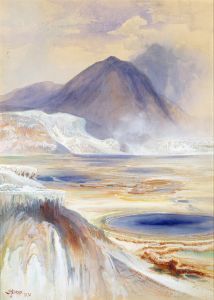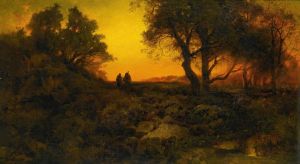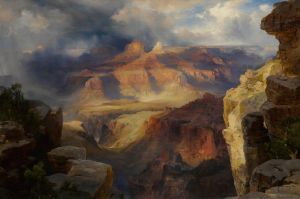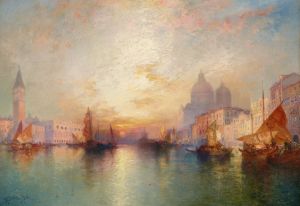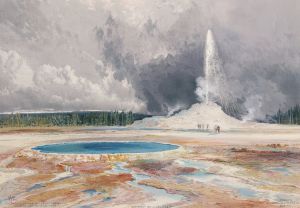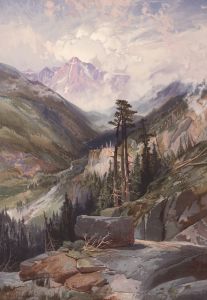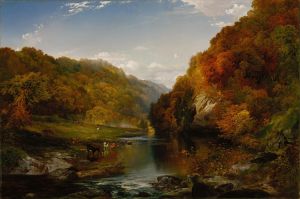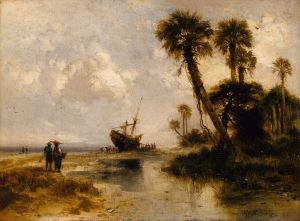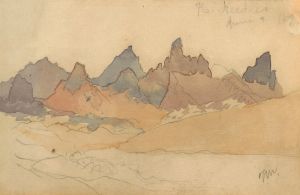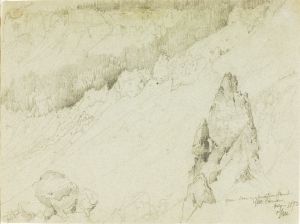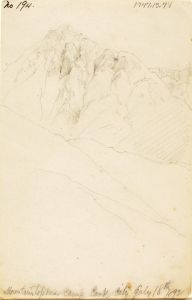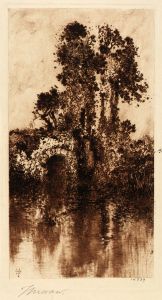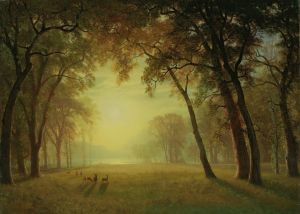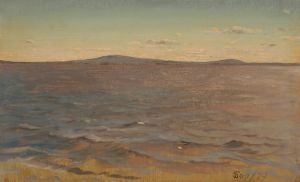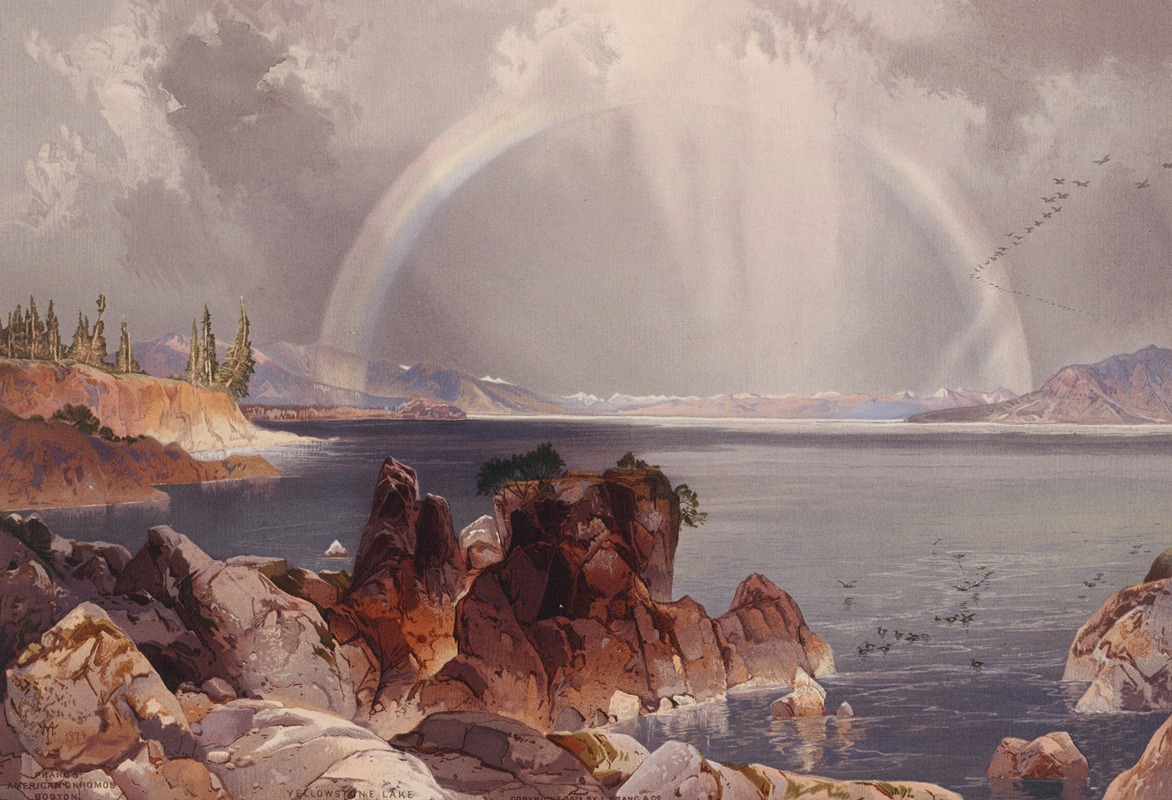
Yellowstone Lake
A hand-painted replica of Thomas Moran’s masterpiece Yellowstone Lake, meticulously crafted by professional artists to capture the true essence of the original. Each piece is created with museum-quality canvas and rare mineral pigments, carefully painted by experienced artists with delicate brushstrokes and rich, layered colors to perfectly recreate the texture of the original artwork. Unlike machine-printed reproductions, this hand-painted version brings the painting to life, infused with the artist’s emotions and skill in every stroke. Whether for personal collection or home decoration, it instantly elevates the artistic atmosphere of any space.
Thomas Moran's "Yellowstone Lake" is a notable painting that captures the grandeur and beauty of Yellowstone National Park, a subject that Moran is famously associated with. Thomas Moran (1837–1926) was an American painter and printmaker of the Hudson River School in New York whose work often featured the American West. His paintings played a significant role in the establishment of the national parks system in the United States.
"Yellowstone Lake" is one of Moran's many works that depict the Yellowstone region, an area that he visited during the Hayden Geological Survey of 1871. This expedition was a pivotal moment in Moran's career and in the history of American art, as it provided him with the opportunity to explore and document the then-little-known landscapes of the American West. His paintings from this expedition, including "Yellowstone Lake," were instrumental in convincing Congress to establish Yellowstone as the first national park in 1872.
The painting itself showcases Moran's skill in capturing the vastness and sublime beauty of the natural world. "Yellowstone Lake" features the expansive body of water with surrounding mountains and sky, rendered in Moran's characteristic style that combines realism with a romantic sensibility. His use of color and light conveys the serene yet majestic atmosphere of the scene, inviting viewers to appreciate the untouched beauty of the landscape.
Moran's work is noted for its attention to detail and its ability to evoke the emotional and spiritual qualities of the natural environment. In "Yellowstone Lake," he employs a palette of soft blues, greens, and earth tones to depict the tranquil waters and the lush surroundings. The composition is balanced, with the lake serving as the focal point, drawing the viewer's eye into the depth of the scene.
The impact of Moran's paintings, including "Yellowstone Lake," extends beyond their artistic value. They played a crucial role in the conservation movement of the late 19th century by raising public awareness about the natural wonders of the American West. Moran's art, alongside the photographs of William Henry Jackson, who was also part of the Hayden Survey, provided visual evidence of the unique landscapes that needed protection and preservation.
Today, Thomas Moran's "Yellowstone Lake" is celebrated not only as a masterpiece of American art but also as a historical artifact that contributed to the preservation of one of the nation's most cherished natural areas. The painting is part of the collection of the Smithsonian American Art Museum, where it continues to inspire and educate viewers about the importance of preserving natural landscapes.
In summary, "Yellowstone Lake" by Thomas Moran is a significant work that exemplifies the artist's contribution to American landscape painting and the national parks movement. Through his art, Moran captured the essence of the American wilderness, leaving a lasting legacy that continues to influence both art and environmental conservation.





